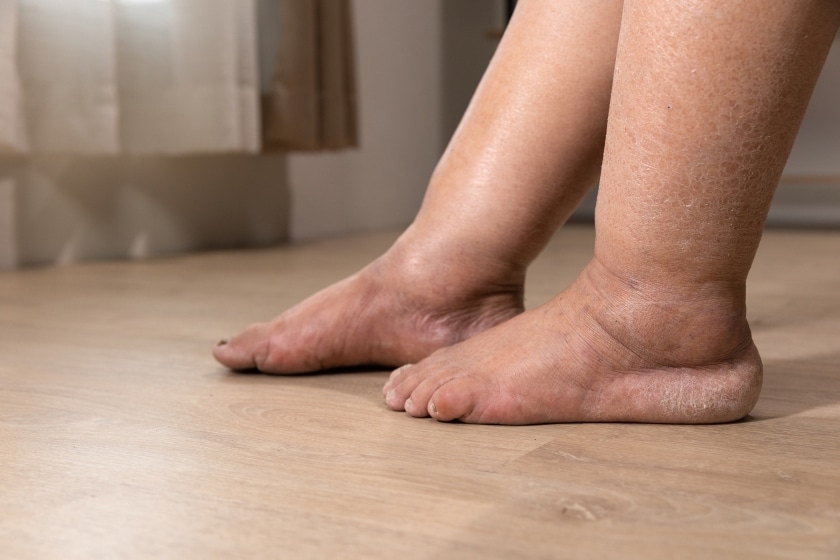What Is Lymphedema?
Lymphedema is a chronic condition that leads to the swelling of certain body parts, most often the arms or legs. This swelling occurs when the lymphatic system is damaged or blocked, preventing lymph fluid from draining properly. When the fluid builds up, it causes noticeable swelling, discomfort, and sometimes pain.
The lymphatic system plays a crucial role in immune function and fluid regulation in the body. When it’s not functioning correctly, the resulting fluid buildup can interfere with daily activities and lead to long-term complications if not managed properly.
What Causes Lymphedema?
Lymphedema can be primary (inherited or congenital) or secondary (caused by an outside factor).
Primary Lymphedema
This type is rare and results from abnormalities in the lymphatic system present at birth or developing later in life without any external trigger.
Secondary Lymphedema
This is the most common type and can result from:
- Cancer treatment, especially surgeries involving lymph node removal
- Radiation therapy
- Infections
- Injuries or trauma to the lymphatic vessels
- Chronic venous insufficiency
In many cases, secondary lymphedema develops months or even years after the initial cause, making early detection and monitoring essential.
Signs and Symptoms of Lymphedema
Lymphedema can develop slowly and may not cause immediate pain. Recognizing early signs can make a significant difference in managing the condition effectively.
Common symptoms include:
- Persistent swelling in one or more limbs
- A heavy or tight feeling in the affected area
- Limited range of motion
- Recurring infections
- Skin thickening or hardening (fibrosis)
- Aching or discomfort
If left untreated, these symptoms can progress and affect quality of life, making simple activities like walking, dressing, or writing challenging.
Stages of Lymphedema
Lymphedema is generally classified into four stages:
- Stage 0 (Latent Stage) – No visible swelling, but the lymphatic system is compromised.
- Stage I (Reversible) – Swelling is mild and may reduce with elevation; there’s no permanent damage.
- Stage II (Spontaneously Irreversible) – Swelling becomes more persistent, and skin may begin to harden.
- Stage III (Lymphostatic Elephantiasis) – Severe swelling, thickening of the skin, and increased risk of infections.
Early diagnosis and treatment are key to preventing the progression of lymphedema.
How Lymphedema Affects Daily Life
Lymphedema can be physically, emotionally, and socially draining. The visible swelling may lead to self-consciousness, frustration, and anxiety. People with lymphedema may experience:
- Difficulty wearing regular clothes or shoes
- Reduced ability to exercise or stay active
- Trouble with job-related physical tasks
- Frequent medical appointments and ongoing costs
- A sense of isolation or emotional burden
Support, education, and treatment make a tremendous difference in quality of life for individuals managing lymphedema.
Managing Lymphedema: What Really Works
While lymphedema cannot currently be cured, it can be managed effectively. Treatment focuses on reducing swelling, controlling discomfort, and preventing complications.
Here are the most common and effective ways to manage lymphedema:
1. Manual Lymphatic Drainage (MLD)
MLD is a specialized form of massage that stimulates lymph flow. It’s gentle, relaxing, and most effective when performed by a certified therapist trained in lymphedema care. Regular sessions can dramatically reduce swelling and improve comfort.
2. Compression Therapy
Wearing compression garments like sleeves or stockings helps prevent fluid buildup and supports lymphatic circulation. These should be professionally fitted to ensure safety and effectiveness.
3. Therapeutic Exercise
Gentle, low-impact exercises such as walking, swimming, and yoga can improve lymphatic flow and reduce stiffness. A physiotherapist can design a custom program tailored to your needs.
4. Skin Care
Proper skin hygiene is crucial to prevent infections, especially cellulitis. Keeping skin clean, moisturized, and protected from injury reduces risk.
5. Elevation
Elevating the affected limb helps drain fluid. It’s especially helpful after physical activity or at the end of the day.
6. Diet and Hydration
Staying hydrated and maintaining a healthy diet can reduce inflammation. Limiting salt and processed foods may also help prevent fluid retention.
7. Psychological Support
Counselling or support groups offer emotional relief. Connecting with others who understand your condition can ease the burden of managing a chronic illness.
The Role of Physical and Occupational Therapy in Lymphedema Care
Physiotherapists and occupational therapists trained in lymphedema management are essential for long-term care. They provide:
- Personalized treatment plans
- Education on self-care techniques
- Hands-on treatments like MLD
- Guidance with compression garments
- Exercise programming to maintain function and strength
At InTouch Therapy, we offer all these services in a compassionate, one-on-one setting that empowers you to take control of your health.
When to Seek Help
If you’re experiencing swelling that doesn’t go away, a heavy or tight feeling in your limbs, or skin changes that seem unusual, it’s time to seek professional advice. Early treatment is key to preventing long-term complications and maintaining an active lifestyle.
Why Choose InTouch Therapy?
At InTouch Therapy, we understand how overwhelming lymphedema can be. Our approach is rooted in personalized care, science-backed techniques, and a deep commitment to helping you regain confidence in your body.
Whether you’re newly diagnosed or have been dealing with lymphedema for years, we’re here to support your journey. You don’t have to face this alone.
Final Thoughts
Lymphedema can feel isolating, but with the right tools, support, and care, it doesn’t have to define your life. From understanding the root cause to finding long-term solutions, you have options—and you deserve to feel strong, supported, and empowered.
If you’re ready to take the first step, contact us at InTouch Therapy to schedule a consultation and begin your journey to relief and recovery.

